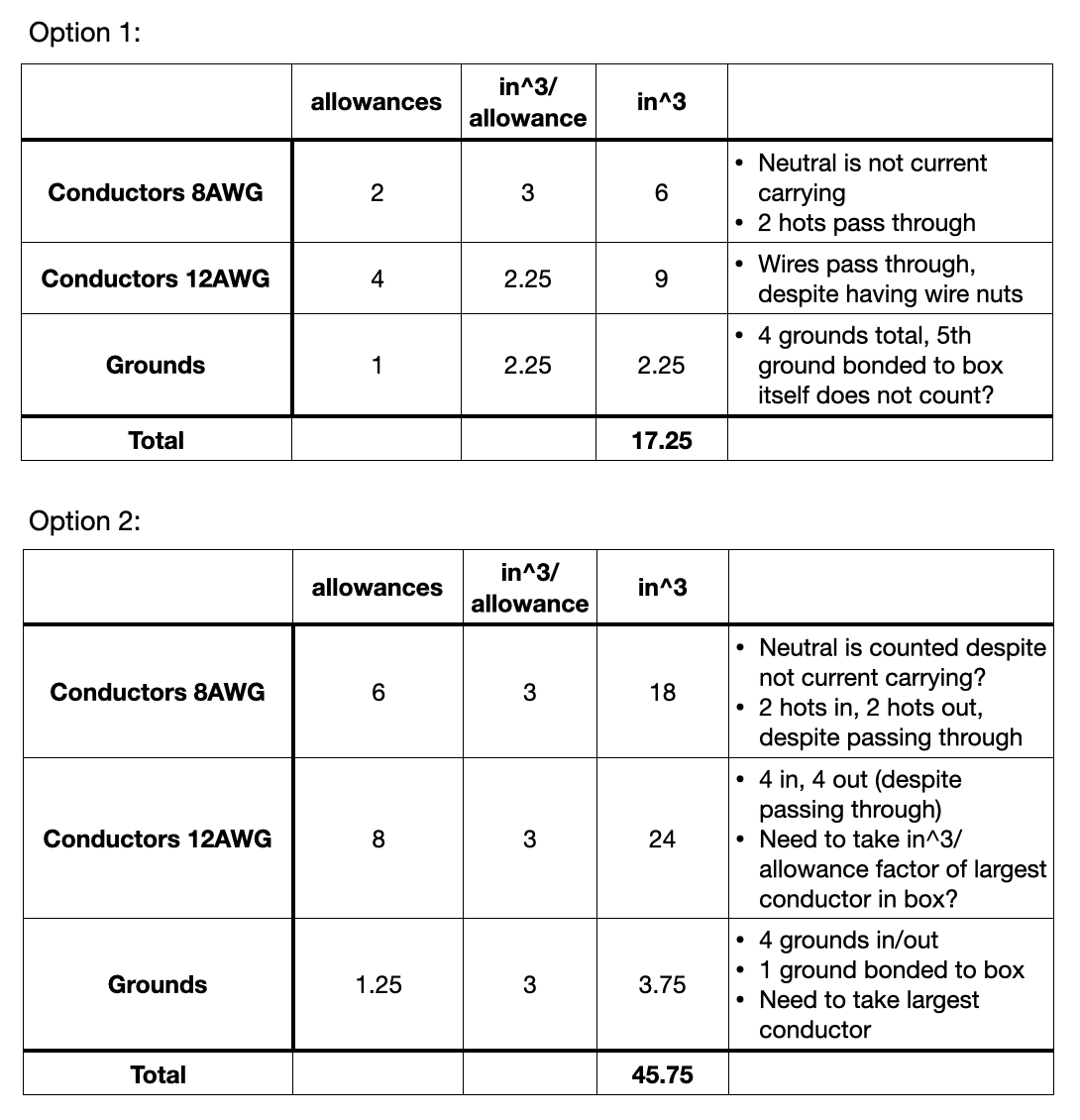Box fill calculations are so frustratingly ambiguous and confusing. I have the following setup:
- A 30A dryer circuit along with 2x20A circuits comes via FMC from panel
- The dryer (3x8AWG) passes through (even without wire nuts)
- The dryer neutral is not current carrying (since it only carries the imbalance between the hots)
- The two 20A circuits (washer and bathroom) also pass through but will have a wire nut because they switch from THHN to romex
- Box is Steel City 72171-1 (42in^3) and no internal clamps
- A total of 4 grounds are needed to go in/out but additionally, the box itself has to be bonded as well
- It is not clear if the allowances count on each individual AWG or if I need to take the factor of the largest conductor.
With all of these ambiguities, I arrive at anywhere between 17.25in^3 to 45.75in^3:
To make things worse, the Steel City 72171-1 has dimensions 4-11/16 times 4-11/16 times 2-1/8 ... which amounts to 46.6919cu^3. Yet the advertised volume is only 42in^3. Why?
Summary:
- When a wire passes through a junction box, does it count as one allowance or two allowances (1 for in, 1 for out)?
- Does this change when the pass-through is broken and connected via wire nut?
- Does the ground box for the box itself count as allowance?
- Do only current-carrying conductors count as allowance? (and not inactive circuits for example)
- Is the neutral of a MBWC or 240V circuit (such as my 30A dryer circuit) defined as current-carrying or not?
- Do all the allowances need to be multiplied with the worst case in^3/allowance factor (in my case 3) or can I add the allowances for the AWG#12 circuits with factor 2.25?
EDIT: I believe the actual volume is 33in^3 (box bonding is pigtail and does not count, 240V neutral does not count, unbroken AWG#8 only count once and everything uses the worst case factor, 3) but I'd really like to confirm all these points.


